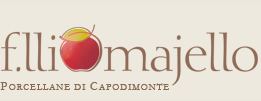Industry Porcelain Type of business Handcraft company | Website www.majello.it Founded 1867 | |
 | ||
Key people Lucio Majello, sculptor (General Manager) Fabio Majello (Sales Manager)Sabrina Majello (Marketing) Products FlowersPorcelain "spaghetto"StatueCapodimonte design | ||
Emilia majello back to me phunk investigation fantasy club mix 320 kbit
Majello was an Italian factory producing Porcelain of Capodimonte.
Contents
- Emilia majello back to me phunk investigation fantasy club mix 320 kbit
- Majello sunshine
- History
- Manufacture
- Authentic Capodimonte
- Typical Capodimonte subjects
- References
Majello sunshine
History
In 1867 Alfonso Majello, awarded "knight of Job", founded the Majello factory that continued the tradition of producing porcelains of Capodimonte started in 1743 with the Real Factory of Capodimonte founded by the king Charles. The tradition continues thanks to the sculptor Lucio Majello and his sons.
Manufacture
The artist will trace the sketch of the object that he wants to realize. The first phase is to make a chalk model on a lathe. The sculptor will then chisel and carve the details of the object. The chalk model is put into porcelain liquid form.
Next comes the floral decoration of petals and leaves.
The signature is added to give a guarantee of authenticity to the buyer. Next the object is cooked to 1250 grades that lasts a minimum pf eight and a maximum of 12 hours from which the biscuit object is obtained.. Decorators paint the object with a brush. Once decorated there is a second cooking of eight hours at 750 grades to fix the colour.
